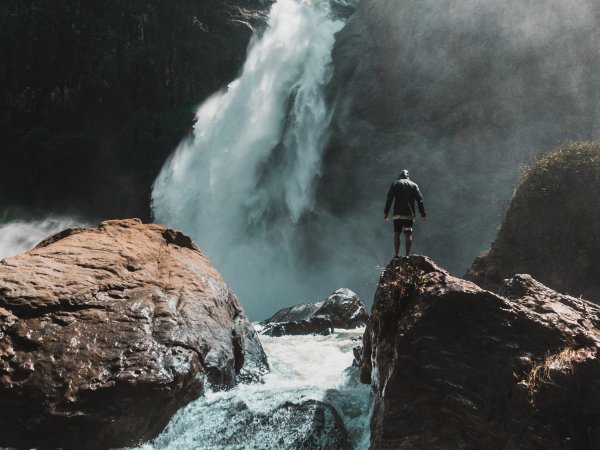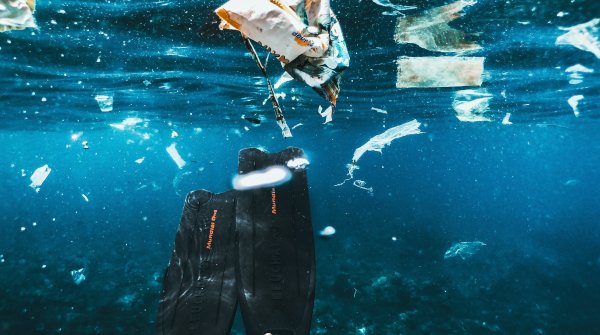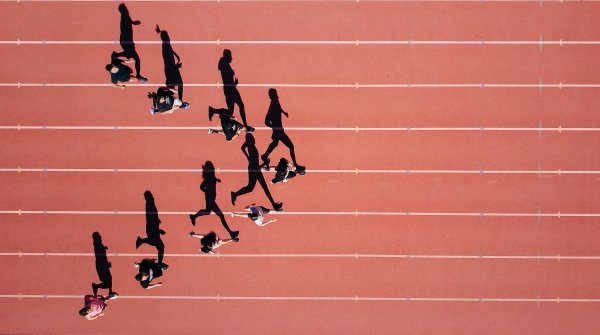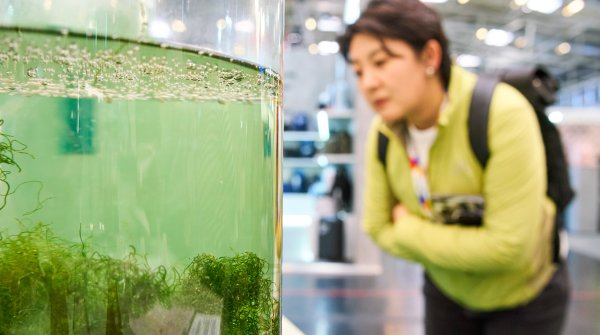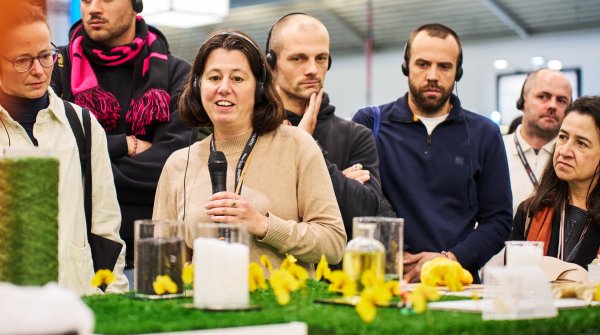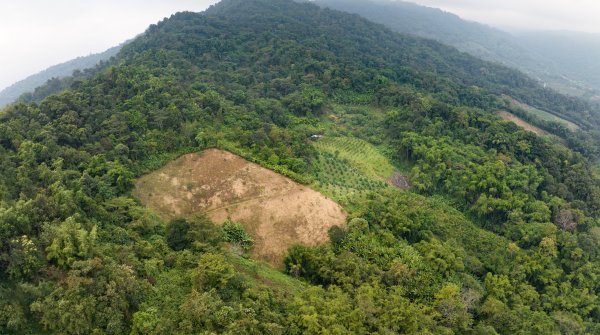In 2023, the sixth planetary boundary value for blue water, i.e. fresh water in lakes, rivers or glaciers, was exceeded. This means that the existence of glaciers worldwide is acutely endangered - with a corresponding impact on many winter sports regions. From 2025, however, something will change in Europe: due to mandatory environmental labelling for everyone, water data from brands and their suppliers must be calculated transparently. Fortunately, there are scientists, industrialists, athletes and explorers who are committed to the environment and are driving the measures forward.
Brands play a key role in informing people about the impact of their production methods and understanding the connection between different systems. At the same time, scientific evidence highlights the urgent need to address the risks of climate change. Melting ice caps and more frequent extreme weather events emphasize the importance of taking action to mitigate and adapt to climate change.
As early as 1975, polar researcher Paul Emile Victor warned of limited water resources with his "S EAU S" project. According to the Future Risks Report 2023 by the insurance company AXA™, climate change has been the number one risk for three years and only 13% of the experts surveyed believe that the public is fully aware of the effects of climate change. There is therefore a perception gap between the scientific community and the general public. To counteract this problem, the UNEP (United Nation Environment Program) offers and supports programs based on the 17 Sustainable Development Goals (SDGs).
According to a Quantis study the textile industry consumes an amount of fresh water equivalent to the volume of 86 million Olympic swimming pools every year, i.e. around 215,000 billion litres. Hydro engineer Charlène Descollonges explains: "Outdoor brands, like all textile industries, are heavily dependent on water resources, particularly in the production of raw materials, but also in processing - dilution, washing, heating, etc. - transportation and distribution. The brand Hoka brand, for example, has calculated a water footprint of 5,000 to 8,000 litres of water for a pair of trail running shoes. Textile production is very water-intensive and also requires land for the cultivation of cotton and other fibres."
The optimal response for the textile and outdoor sports industry would be a rigorous, cross-sector approach for the entire value chain. As well as providing tangible evidence of measurable impacts that can be presented to stakeholders. Public and private actors should continue to champion current global initiatives aimed at creating a framework that ensures access to reliable, robust, comparable and detailed data.
To accompany these steps and research, the non-profit organization China Water Risk (CWR), based in Hong Kong, advises brands on the water resources used and the environmental and social consequences. Their aim is to promote water sustainability and mitigate the risks associated with water scarcity or pollution. According to them, 4% of drinking water in China is used by the fashion industry. By 2030, the gap between water supply and demand is expected to be 40%. Based on international standards such as the IPCC report, CDP Water Disclosure or "The Science Based Targets Initiative" (SBTI), CWR carries out measurements at its suppliers as well as in its industry or during its production in Asia.
In addition, some labels or certifications fully incorporate the management and impact of water use into their assessment criteria. With Bcorp™, Bluesign™ or Fair Play For The Planet for example, this is the case. The latter is the very first environmentally friendly seal dedicated to sports clubs, venues and events. The FPFP label offers a holistic approach to tackling climate change and gives sports facilities the opportunity to improve their economic growth model while protecting the environment and people's well-being.
What happens if no action is taken? The result could be rising tensions over material and energy prices, including water, false messages to customers and a lack of understanding among the public. Ever stricter standards and conflicts with third parties are conceivable. The role of the associations, trade shows and NGOs concerned is also to contribute to agile, adaptable and scalable standards so that they can finance, organize and apply them to their entire value chain.
Charlène Descollonges: "People often put the cursor in the wrong place and imagine that eco-gestures are enough in times of drought. But we need an overall picture in order to take relevant and effective measures - both to stop the climate crisis and to slow down the water cycle. We have accelerated this through urbanization, intensive agriculture, canalization of rivers, deforestation or intensive timber cultivation."
In societies that pay little attention to this issue, there are also psycho-social risks and ecological fears that can slow down productivity and sales.
According to the European Union's CSRD Directive, companies with more than 500 employees and a turnover of 50 million euros must report on their sustainability activities more comprehensively and according to more uniform standards from this year onwards. The impact analysis will also include an assessment of the water resources used for production. The consequences of this water consumption - including pollution of the oceans, climate change or biodiversity - are part of the scopes for assessing the impact of the environment category. Thomas Buberl, CEO of AXA, writes in the Risk Report 2023: "The results of the survey draw the contours of a world in a polycrisis, where risks are now interconnected. Anticipating these risks helps us to protect ourselves from them and prepare for them more effectively so that the future does not pose a risk for us."
The water cycle inspires athletes, mountaineers, skiers and trail runners. This is exemplified by the film Aurora Riding North by Mathieu Crépel and Damien Castera, the brand ambassadors of Oxbow™ and Picture Organic™ respectively, who follow water from snowflake to wave. Outdoor athletes are directly connected to and involved in the preservation of the environment in which they practice their sport. International brand athletes are committing to ever stronger, science-backed decisions. "Outdoor sentinels" is the name chosen by the Lafuma™ brand to represent the community committed to protecting their adventure areas.
Picture Organic has surrounded itself with a strong family of ambassadors who are champions in snowboarding, skiing, mountain biking and surfing. Together with them, the brand funds and promotes documentaries to raise awareness and share stories of exploration and virtuous practices. In 2022, Cédric Gras and Matthieu Tordeur dedicated a film to the longest mountain glacier in the world, a forgotten glacier in Tajikistan: the Fedchenko. At Salomon, the Mountain Academy program raises awareness through experience. In the film "Will a ski resort without ski lifts change the sport?" shows a freer and less intrusive practice of skiing in the Hankin Evelyn area of British Columbia.
These works are intended to sensitize us to the fragility of the world. In the Pyrenees, the Vinhamala glacier will be one of the half of the mountain glaciers that will disappear in the next few decades. "Guardians of the Climate" is the title of the latest book by Dr. Heïdi Sevestre, a glaciologist, documentary filmmaker and researcher specializing in glaciers and polar research and a member of the Secretariat of the Arctic Monitoring and Assessment Programme. In her film "Heïdi's ice, en arctique avec une glaciologue", she observes the retreat of glaciers in the Arctic. With optimism and realism, she is committed to conveying warning messages to companies, institutions and the general public to engage them in an educational way. They are equally inspiring to develop the imagination internally and to convey messages to outdoor sports enthusiasts.
There are numerous associations that outdoor brands can partner with for education or to support scientific observations and research: Mountain Wilderness, Protect Our Winters, Fondation Eau, Neige ] Ice Cream, Water Family, Surfrider Foundation Europe, Under The Pole. When it comes to communication and marketing, it is crucial for a brand to anticipate its impact and leverage its content. For example, through a compelling narrative that connects the key offerings, the functional and emotional benefits, and the role of the brand with biodiversity and the users of the products. Presented in an appealing, authentic way.
If the polar regions are already severely affected, will we also see Europe's glaciers disappear? Outdoor brands face the major challenge of remaining desirable by innovating with less harmful products. The challenge is to preserve the playgrounds in order to benefit from our environment instead of depleting it. This is also the task of the regenerative company. After all, the mountains remain one of the few playgrounds where responsibility and freedom coexist, and that is the message of many explorers. The best response may be to advocate for greater transparency and develop rigorous cross-cutting standards, as demanded by public and private actors who maintain their commitment to ongoing global initiatives. To create a framework that ensures access to reliable, robust, comparable and detailed data while advocating for coherence between different standards and laws.
- ISPO awards
- Mountain sports
- Bike
- Design
- Retail
- Fitness
- Health
- ISPO Job Market
- ISPO Munich
- ISPO Shanghai
- Running
- Brands
- Sustainability
- Olympia
- OutDoor
- Promotion
- Sports Business
- ISPO Textrends
- Triathlon
- Water sports
- Winter sports
- eSports
- SportsTech
- OutDoor by ISPO
- Heroes
- Transformation
- Sport Fashion
- Urban Culture
- Challenges of a CEO
- Trade fairs
- Sports
- Find the Balance
- Product reviews
- Newsletter Exclusive Area
- Magazine
